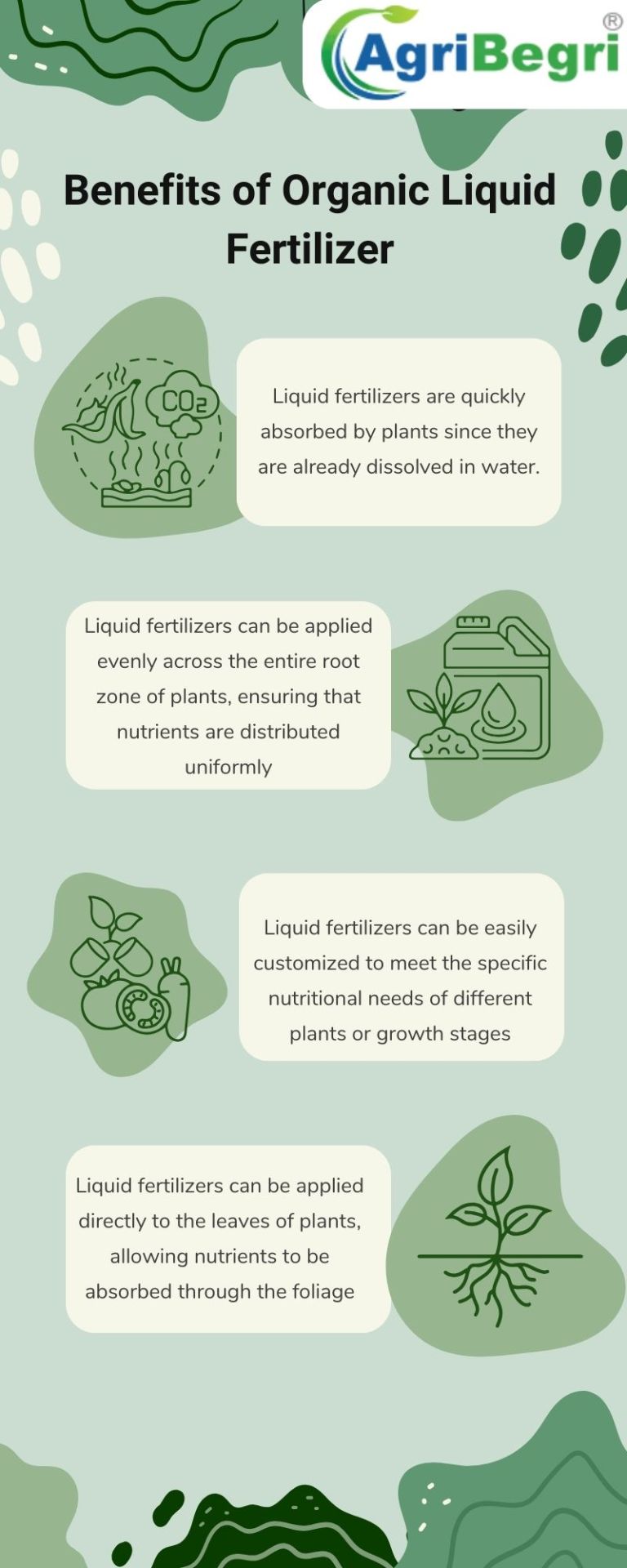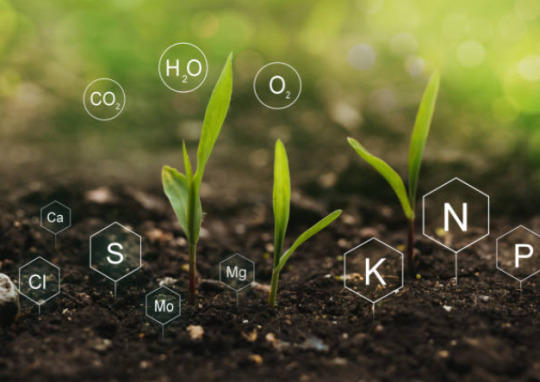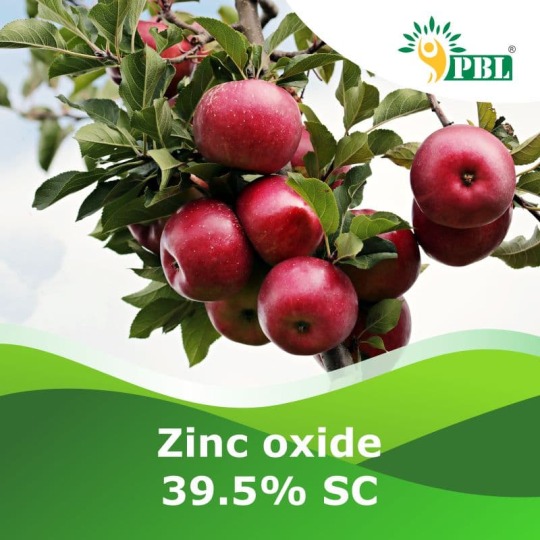#crop nutrition
Text
#Crop Nutrition#Agricultural Micronutrients#Crop Nutrient Management#Integrated Nutrient Management (INM)#Sustainable Agriculture
0 notes
Text
The global market for agricultural micronutrients, essential elements for optimal crop nutrition, is experiencing steady growth. The market growth is being driven by an increasing focus on sustainable agricultural practices and effective crop nutrient management. Integrated nutrition management strategies that incorporate micronutrients have become an absolute necessity to cater to the needs of a growing population. The adoption of comprehensive crop nutrition strategies holds immense potential to enhance crop yields, improve food quality, and promote long-term agricultural sustainability.
#Crop Nutrition#Agricultural Micronutrients#Crop Nutrient Management#Integrated Nutrient Management (INM)#Sustainable Agriculture
0 notes
Text
Nano Fertilizer Market Strategies, Environmental Impact, and Sustainable Agricultural Practices
The global nano fertilizer market size is expected to reach USD 9,377.3 million by 2030, as per the new report by Grand View Research, Inc. The market is expected to grow at a robust CAGR of 14.8% from 2022 to 2030. The industry growth is primarily driven by increasing demand for better crop yields due to a significant rise in the global population and limited availability of key resources like land.
Nano Fertilizer Market Report Highlights
The global market is estimated to advance at a CAGR of 14.8% from 2022 to 2030. This is attributed to the rising demand for food crops due to the increasing population thus creating the need for using high-yield nano fertilizers
North America dominated the global market in 2021 with a revenue share of over 34%. This is owed to advancement in agriculture in developed countries such as Canada and the U.S.
Favorable policies along with technological advancements in the agricultural sector helped make the U.S., the largest consumer of nano fertilizer
Nitrogen emerged as a major raw material used for the production of nano fertilizer in 2021, with a revenue share of over 25%. Easy and cheap availability of Nitrogen makes it the topmost preference among consumers
Soil method of application captured the largest market share of over 70% in 2021. This growth is attributed to the capability of nano fertilizers to release nutrients in the soil, thus, enabling better penetration into the roots of the crops
Cereals & grains are the largest application segment in terms of revenue. It contributed over 40% to the global revenue share. The growth of this segment can be attributed to the fact that it is the major source of iron, dietary proteins, vitamins, and dietary fibers required by the human body. Thus, to fulfill the growing demand for cereals & grains continues to push food growers to purchase nano fertilizers in rising quantities
For More Details or Sample Copy please visit link @: Nano Fertilizer Market Report
Growing focus on increasing the quantity of yield has led to the indiscriminate use of fertilizers in agriculture. This can result in both environmental and agricultural catastrophes by degrading the quality of the soil. According to a report by Food and Agricultural Organization (FAO), natural resources such as water and arable land are on the verge of exhaustion. Furthermore, degradation at a high rate continues due to intensive urbanization and excessive use of chemical fertilizers. Thus, the declining nutritional quality of food and degraded quality of soil continues to drive a gradual shift toward nanotechnology in agriculture. Nano fertilizers remains an ideal prospect to maintain the quality of soil while meeting production target.
The use of nano fertilizers can help in reducing chemical fertilizer consumption by 80 to 100 times, thus reducing the reliance on chemical fertilizers. For instance, the demand for nano urea is increasing worldwide as it has the ability to replace regular urea usage at a relatively lower cost while offering high yields to crops. By 2023 nano urea is expected to replace the usage of 13.7 million tons of conventional urea. Thus, the huge demand for nano fertilizer from the agriculture industry along with supportive government policies continues to promote newer and more efficient agriculture techniques.
The importance of policy framework remains paramount to promote sustainable growth, and such framework is already in place for nano fertilizers in key regions. For instance, U.S department of agriculture in 2020 announced to make USD 250 million investment through its new grant program. This initiative was taken to support new innovative and more efficient fertilizer production in the region. Additionally, USDA seeks growth in competition as it aims to allay concerns regarding supply chain. With its new initiatives, the USDA continues to introduce more transparency for consumers to make them aware of the safety of agriculture produce. These initiatives aimed at gauging the use of fertilizers, seeds, retail markets, continue to generate momentum for the eco-friendly and high-yield promising nano fertilizers.
#Nano Fertilizers#Crop Nutrition#Agritech#Fertilizer Technology#Smart Farming#Green Revolution#Agribusiness#Crop Yield Enhancement#Environmental Sustainability#Global Food Security#Nano-technology In Agriculture#Agro-chemicals#Farming Solutions#Future Of Farming#Nutrient Management#Crop Productivity#Nano-Agri Solutions#Agri Tech Trends#Agro Economics#Modern Agriculture#Agri Research#Tech In Farming#Agricultural Science#Eco-Friendly Fertilizers
1 note
·
View note
Text
Sugarcane Farming In Kenya; Ultimate Way To Make Money
Sugarcane farming is considered relatively simple. However, the crop has a long growth cycle and needs heat and sufficient moisture during this time. Thus, farmers should, ahead of time, select a field with the best microclimate to grow sugar cane efficiently. It is also necessary to monitor crops’ condition and adjust cultivation procedures to obtain a high yield. In Kenya sugarcane is grown…

View On WordPress
#kenyasugar#sugarcanechallenges#sugarcaneexport#SugarcaneFarming#sugarcaneharvest#sugarcaneindustry#sugarcanemarket#sugarcaneopportunities#sugarcaneplantation#sugarcaneproduction#sugarcaneprofit#sugarcaneyield#agricultural practices#agricultural sustainability#agriculture#challenges#crop#crop cultivation#Crop management#crop nutrition#crop yield#export#farm productivity#Farming#farming techniques#harvest#industry#kenya#Kenya Agriculture#market
0 notes
Text
#Nutritions#agriculture#plants#badikhetiindia#plant nutrients#agricultural nutrition#crop nutrition#buy plant nutritions online
1 note
·
View note
Text
SOIL HEALTH AND BALANCED CROP NUTRITION
Soil health is the foundation of balanced crop nutrition. Up to 60% of yield is dependent on soil fertility. Setting the foundation for healthy soils provides substantial crop productivity and sustains the land for generations to come! By managing soils differently than what has been done in the past, value can be added to not just a single crop season or field, but impact long-term soil health, allowing for higher yields every year. It can be accomplished through soil replenishment, nutrient efficiency and sustainability practices.
Nurture the soil, nourish the crops
Encouraging a crop nutrition program for higher yields involves feeding the soil that feeds the plant. It starts with understanding how nutrients interact with each other and their movement within the soil and plant. By understanding exactly, which nutrients are required for optimum growth and healthy soils, growers can create a sustainable production system for future generations.
The value of organic matter in Soil Health
Soil is composed of air, mineral, water and organic matter, which work together to dictate the affluence of a soil’s profile.
Organic matter plays an important role in soil health. It’s the fragment of the soil that includes plant, animal and microbial residues in various stages of decomposition, biomass of soil microorganisms and substances produced by plant roots and other soil organisms.
Expanding levels of organic matter aids in soil structure, water-holding capacity, nutrient mineralization, biological activity, and water and air infiltration rates. Co-locating organic matter near applied nutrients helps to concurrently nourish the plant roots and soil microbes, resulting in improved nutrient uptake and yield.
Building up and keeping up healthy soil can help in higher yields and shape crop resiliency to environmental stresses. Healthy soil also has robust water retention capacity.
Maintaining the health of soils produces more organic matter, which provides a robust foundation for healthy crops.
Supporting long-term Soil Health
Its important to frequently observe soil nutrient levels and replenish them to account for the nutrient removal of each crop. Think about adding a soil health product with organic materials into your annual inputs to build or maintain healthy soils. Aim to deliver the correct balance of nutrients and the right material consistency to maximize soil health.
The future of Soil Health
Mosaic is committed to help the agriculture industry drive soil health forward. By carrying out sustainable practices on the farm now, there is substantial opportunity to ensure environmental stewardship for the future while continuing to achieve considerable yields and profitability.
1 note
·
View note
Note
I don't think Mangey would be tallest. He's been scavenging for food for, most likely, his whole life. That'd stunt his growth lol Sails would be the tallest for sure
I have a better idea
Sonic remains tallest (please as an eldest sibling who's experienced the height curse let me have this)
#there's logical reason too (sort of)#Nine has stunted growth#so does Mangey. giving it to Tails as well because he had it pretty tough before Sonic found him and then again#Sonic was a child himself so technically he wouldn't have been always able to provide all the nutrition Tails needed#and Sails grew up on the see. not much fresh crop or balanced diet there either#sonic the hedgehog#sonic#sth#sonic prime#miles tails prower#nine the fox#tails nine#miles nine prower#prime bros#mangey tails#sonic prime mangey#mangey the fox#sails the fox#sails tails#sonic prime sails#sonic prime sonic#sonic prime tails#prime tails#prime sonic#ask answered#anon ask
43 notes
·
View notes
Text
Reading an article for work, and the authors are like "We understand that the farmers we surveyed sell a portion of the fruit crops from their shade trees; however, we think they could make more money if they sold more of their fruit crops instead of eating them. They're indifferent to this suggestion though."
With all due respect (none), have the authors considered that fruit is much easier to eat than money?
#agroforestry#like okay money can be exchanged for goods and services#but considering the nutritional value of the fruit crops in the survey#I think it's a good balance
17 notes
·
View notes
Text
and actually being a nutrition major on this site is a nightmare but also is nice to remind me that i have job security
#ive yet to see a post about nutrition's ties to health on this site that im 100% happy with#except that one about not listening to the idea that crops we've been eating for centuries are suddenly bad for you#you guys. all of you. stop assigning moral values of good/bad to foods & calories & body types & weight gain & weight loss#but asking for nuance on this topic from tumblr is a hefty demand i understand#.txt
3 notes
·
View notes
Text
Buy Premium Liquid Fertilizers Online | AgriBegri
Discover top-quality liquid fertilizers online at AgriBegri. Enhance your crop yields with our range of nutrient-rich liquid fertilizers, carefully formulated for optimal plant growth and health.

0 notes
Text
Discovering the Nutritional Benefits of Growing Organic Produce
Discovering the Nutritional Benefits of Growing Organic Produce
Organic gardening is a fantastic way to not only get healthy, delicious food, but to also reduce your environmental footprint. Growing your own food organically can give you a wide variety of nutritional benefits.
Organic fruits and vegetables are free from the harsh chemicals used in conventional farming. The natural fertilizers and pest control used in organic gardening make the plants…

View On WordPress
#agriculture#benefits#Crops#Diet#environmental#fruits#Growing#healthy#impact#natural#Nutrients#nutrition#organic#Produce#vegetables
2 notes
·
View notes
Text

Atomic Gardening refers to a mid-20th-century scientific technique that involved exposing plants to radiation in order to induce mutations and create new, potentially improved varieties. The idea behind atomic gardening was to harness the mutagenic effects of radiation, such as X-rays or gamma rays, to induce random genetic mutations in plants. Scientists believed that some of these mutations might lead to desirable traits, such as improved yield, disease resistance, or other beneficial characteristics.
This approach was explored as a method for crop improvement and was part of broader efforts to increase food production in the post-World War II era. The hope was that by exposing plants to radiation, researchers could generate genetic diversity more rapidly than traditional breeding methods, allowing for the development of new and improved crop varieties.
The term "Atomic Gardening" gained popularity in the 1950s and 1960s when various countries, including the United States, conducted experiments in which crops like wheat, rice, and barley were exposed to radiation. However, the technique eventually fell out of favor as researchers better understood the complexities of genetic mutations and the potential risks associated with ionizing radiation. Modern genetic engineering techniques have largely replaced atomic gardening in contemporary agricultural research. However, it remains popular in the Asia-Pacific region.
*Photo | Rio Star Grapefruit: https://historycollection.com/atomic-gardening
#atomic gardening#atom#science#x ray#gamma rays#radioactive#gmo#farm#agriculture#history#science history#usa#asia#atoms for peace#1950s#1960s#crop#nutrition
1 note
·
View note
Text
Greening Agriculture with Nano Fertilizers: Market Insights and Prospects
The global nano fertilizer market size is expected to reach USD 9,377.3 million by 2030. The industry growth is primarily driven by increasing demand for better crop yields due to a significant rise in the global population and limited availability of key resources like land.

Gain deeper insights on the market and receive your free copy with TOC now @: Nano Fertilizer Market Report
Growing focus on increasing the quantity of yield has led to the indiscriminate use of fertilizers in agriculture. This can result in both environmental and agricultural catastrophes by degrading the quality of the soil. According to a report by Food and Agricultural Organization (FAO), natural resources such as water and arable land are on the verge of exhaustion. Furthermore, degradation at a high rate continues due to intensive urbanization and excessive use of chemical fertilizers. Thus, the declining nutritional quality of food and degraded quality of soil continues to drive a gradual shift toward nanotechnology in agriculture. Nano fertilizers remains an ideal prospect to maintain the quality of soil while meeting production target.
The use of nano fertilizers can help in reducing chemical fertilizer consumption by 80 to 100 times, thus reducing the reliance on chemical fertilizers. For instance, the demand for nano urea is increasing worldwide as it has the ability to replace regular urea usage at a relatively lower cost while offering high yields to crops. By 2023 nano urea is expected to replace the usage of 13.7 million tons of conventional urea. Thus, the huge demand for nano fertilizer from the agriculture industry along with supportive government policies continues to promote newer and more efficient agriculture techniques.
The importance of policy framework remains paramount to promote sustainable growth, and such framework is already in place for nano fertilizers in key regions. For instance, U.S department of agriculture in 2020 announced to make USD 250 million investment through its new grant program. This initiative was taken to support new innovative and more efficient fertilizer production in the region. Additionally, USDA seeks growth in competition as it aims to allay concerns regarding supply chain. With its new initiatives, the USDA continues to introduce more transparency for consumers to make them aware of the safety of agriculture produce. These initiatives aimed at gauging the use of fertilizers, seeds, retail markets, continue to generate momentum for the eco-friendly and high-yield promising nano fertilizers.
#Nano fertilizer Market#Nano Fertilizers#AgTech Innovation#Sustainable Agriculture#Crop Nutrition#Nano technology In Farming#Precision Fertilization#Green Agribusiness#Fertilizer Efficiency#Smart Agricultural Solutions#Agribiotech#Future Of Agriculture#EcoFriendly Fertilizers#Nanoparticle Nutrition
0 notes
Text
It's also been shown, more generally, that adding artificial nitrogen to plants decreases beneficial nutrients in some crops such as lettuce, rocket, carrots and cabbages, and increases nitrates/nitrites, which are known carcinogens.
"Soil: The incredible story of what keeps the earth, and us, healthy" - Matthew Evans
#book quotes#soil#matthew evans#nonfiction#nitrogen#nutrients#plant nutrition#crops#farming#lettuce#rocket#carrot#cabbage#nitrate#nitrite#carcinogens
0 notes
Text
Optimizing Agriculture: Liquid Zinc Oxide 39.5% SC for Enhanced Crop Growth.
The “Liquid formulation with Zinc oxide 39.5% SC ” is an innovative agricultural solution that provides several benefits. It requires a low dosage, enhances zinc nutrition, and is rapidly absorbed through nanoparticles. It is also compatible with agrochemicals and promotes nitrogen metabolism, which leads to improved protein and starch production. Additionally, it supports chloroplast and enzyme enhancement, contributing to overall plant health and vitality.

#Liquid Zinc Oxide 39.5% SC#agriculture#crop growth#zinc nutrition#rapid absorption#agrochemical compatibility#nitrogen metabolism#protein production#starch production#chloroplast#enzyme levels
0 notes
Link
.
1 note
·
View note